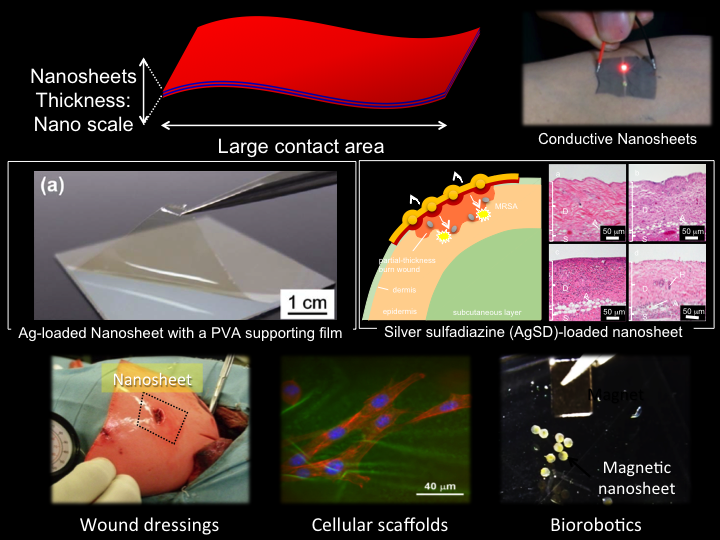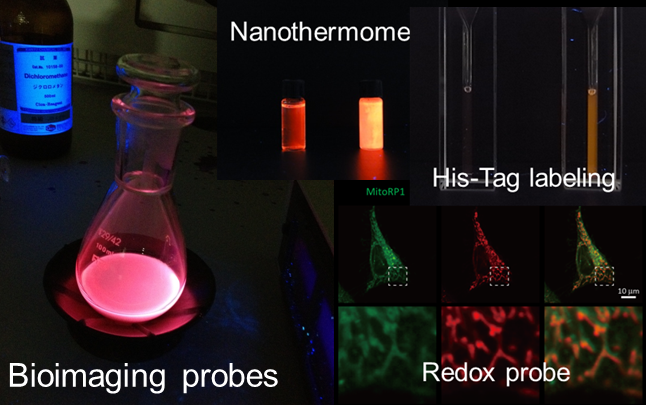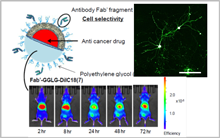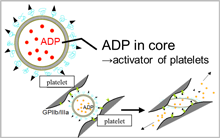- takeoka@waseda.jp
- 03-5369-7324
Introduction / Platelet Group
About Platelet Group
Our laboratory has constructed nanoparticles that could accumulate at sites of vascular injury and facilitate platelet aggregation. These particles demonstrated hemostatic efficiency by mimicking some functions of platelet.
As mentioned, we prepared nanoscale phospholipid vesicles that consist of fibrinogen dodecapeptide (HHLGGAKQAGDV, H12) on the surface and platelet activator, adenosine 5‘-diphosphate (ADP) was encapsulated within its’ aqueous core. These vesicles cross-linked between activated platelets through H12 conjugated on the surface, thus leading to the promotion of platelet aggregation. Moreover, induction of platelet activation was achieved by the release of ADP encapsulation, as such; these vesicles could behave as platelet substitutes posing high hemostatic effect.
To date, we had demonstrated that these platelet substitutes could specifically accumulate at sites of vascular injury. It was also shown that administration of these platelet substitutes could reduce bleeding time in animal studies using model thrombocytopenic rats and rabbits. Therefore, we conclude that these platelet substitutes were successfully constructed. Currently, we are evaluating their hemostatic effects and vesicles’ efficacy using other animals’ models in the aim of applying our platelet substitutes for clinical use.
Topics
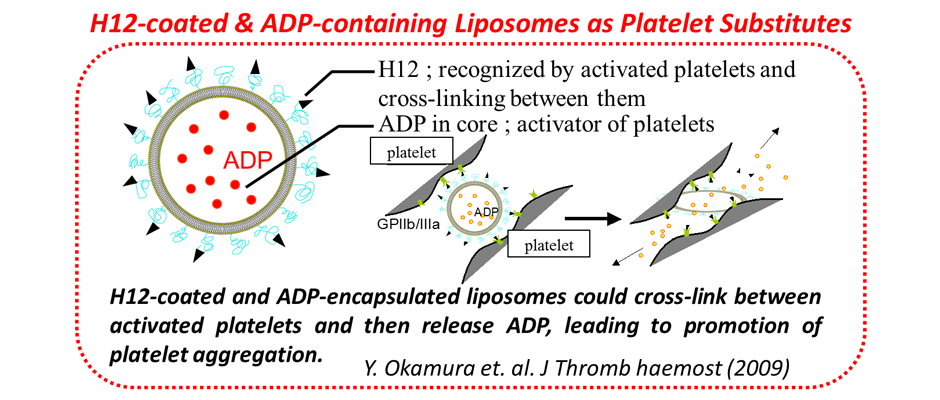
H12-coated & ADP-containing Liposomes
H12-coated and ADP-encapsulated liposomes could cross-link between activated platelets and then release ADP, leading to promotion of platelet aggregation.
Research Topics
Nanosheet Group
Development of a free-standing ultra-thin and biocompatible polymer nanosheets
Imaging Group
To reveal a lot of unknown cellular activities, we are constructing novel fluorescent probes for bio-imaging
Liposome Group
Liposome should be multi-functional platform for drug delivery system
Platelet Group
Liposome based artificial platelets could promote platelet aggregation

